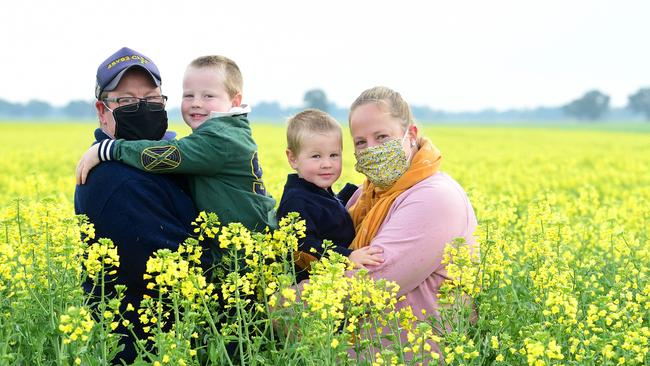Revealed: The regional Victorian towns desperate for workers
New data has revealed which regional Victorian communities are being stretched as they struggle to find and house workers.
From agriculture to manufacturing, construction and education, regional Victoria’s workforce is stretched as the state’s major worker shortage shows no signs of slowing down.
Labour markets are the tightest in western Victoria and the state’s South West, where the Small Area Labour Markets December 2022 report shows record low unemployment rates in shires such as Moyne (1.2 per cent), Corangamite (1.4 per cent), Colac Otway (1.5 per cent) and Warrnambool (1.9 per cent)
Southwest Victorian agricultural and meat processing company the Midfield Group, which employs about 1500 people, was largely relying on luck to find new workers.
“Business is ticking along, but it isn’t what it could be if we had more staff,” Midfield Group general manager Dean McKenna said.
“We are only purchasing what we can process and so we are restricted in how competitive we can be in the livestock market, and that places pressure on the livestock market.”
Meanwhile Prue Milgate, of Ettrick Farms at Serpentine in central Victoria, said a worker shortage in the Loddon region was affecting essential services like childcare.
“There is a massive shortage of workers, especially an agricultural shortage and this is affecting other areas,” she said.
“We have three kindergartens near us, and they are not open at least one day a week each.
“They can’t find staff because people are going to work in other areas with better pay, like on-farm roles.”

With more than 10 job vacancies, Mr McKenna said a lack of housing was the largest obstacle for Midfield trying to find new employees.
“Last time I checked the unemployment rate in Warrnambool, for example, was less than 2 per cent so everybody who is local already has jobs,” he said.
“So if we want to hire someone they need somewhere to live and there is nothing available.
“It is the same for us, for the hospital, the council, it is a common problem.
“We have had plans with the local and state government for multiple years now to build some accommodation for staff on our own property, but we haven’t made any progress with that.”

Across regional Victoria, the Small Area Labour Markets December 2022 report showed the unemployment rate continued to decrease to an average of three per cent, down from 3.5 per cent 12 months ago.
Several regions also experienced significant drops in the unemployment rate, including the Glenelg shire, which dropped from 5.5 per cent to 2.4 per cent and Moyne, which decreased from 2.9 to just 1.2 per cent compared to December 2021.
The regional Victorian labour market is also tighter than Victoria as whole and Australia, which share an unemployment rate of 3.5 per cent.
Rural Councils Victoria deputy chair Cr Laura Binks, who is also mayor of the Strathbogie Shire, said a housing crisis in rural and regional Victoria was contributing to the worker shortage.
“RCV commissioned a report, the Rural Victoria Housing Blueprint, from SGS Economics and Planning, which clearly demonstrates the need for 87,400 new homes in rural Victoria alone over the next 15 years,” she said.

“While not being adequately funded by other levels of government, these important pieces of work cannot be done without resources.
The work is expensive and time-consuming and small rural councils need to be properly funded.
“Employers across rural and regional Victoria are already seeing this dynamic play out.
“Some businesses are not able to open their usual hours for lack of workers.
“Many medical clinics are not able to take on new patients for lack of doctors.”
Meanwhile in the east of the state, several Gippsland regions recorded significant drops in their unemployment rates despite Saputo announcing plans to close its Maffra dairy processing plant and the Maryvale Mill permanently closing its white paper line.
Latrobe’s unemployment rate has fallen by 2.5 per cent to 5.4, while in the Wellington shire there was a 1.5 per cent drop to 3.6.
The number of people employed in Latrobe reached 147,400, a 6.6 per cent increase in the past year.
Minister for Regional Development Harriet Shing said the state government was creating jobs in Gippsland via long-term investments in the SEC, the growth in renewable energy and preparations for the 2026 Commonwealth Games.





